|
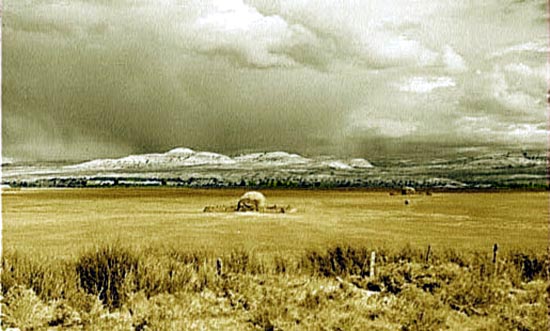
September Snow, looking east toward Gros Ventre Range, 1941.
John Colter, a veteran of the Lewis and Clark expedition, is generally credited as the first white American to visit the valley
now known as Jackson Hole. The valley
was named by William Sublette, a partner with Jedediah Smith and David E. Jackson in the purchase of the
Ashley Fur Company, after his partner. Jackson, himself, reportedly spent the winter of
1829 at Jackson Lake. Trappers conducted regular rendezvous in Wyoming up to about 1845 when the fur trade ended.
The majority of the rendevous were held near Pinedale on the Green River.
The valley next gained attention as
a result of the Hayden Expedition
of 1871 which included in its ranks William Henry Jackson, the photographer.
The mountain was named by Hayden after Thomas Moran, the expedition's artist.
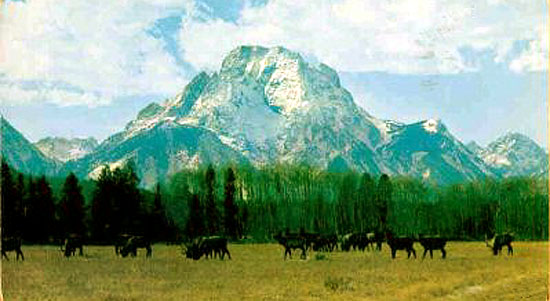
Mount Moran,
elk in foreground, the pine trees behind the elk mark a glacial moraine.
Along the west side of the valley, the Grand Tetons, rising 8,000 feet above the valley floor, provide a spectacular backdrop. The mountains are,
however, much younger than the older Gros Ventre Range to the east of the valley. The Gros Ventre were formed as a part of the
uplift of the Rocky Mountains some 30 to 40 million years ago, while the Tetons, were formed only about five to mine million years ago. The valley also provides
an outstanding illustration of the effects of glaciation during repeated periods of global cooling following by
cycles of global warming. The valley was initially formed by the drop of a portion of the Earth's crust between two faults. The Earth's crust to
the west of the valley tilted, uplifting along the western side of the valley. The drop of the valley floor provided the sharp facade of the
Tetons from the Wyoming side, while there is a gentler incline on the Idaho side. The original valley floor is
some twenty thousand feet below the current valley floor. Material washed into the valley by erosion and
Volcanic ash a mile deep underlie the valley. Some 100,000 years ago,
glaciers flowed southward out of Yellowstone reaching a point south of the present town of Jackson. The glaciers receded
but then returned some 60,000 years ago, and again 20,000 years ago, retreating only about 15,000 years before the
present day. As the glaciers advanced they pushed rocks before them. As the glaciers retreated they left hills or moraines at
their edges or at the point of
furthest advance. The moraines are marked by ridges topped with pines as in the above photo. The glaciers also
scoured out a series of lakes along the valley. Areas where the glacial ice melt washed away the soil are
marked by the sagebrush.
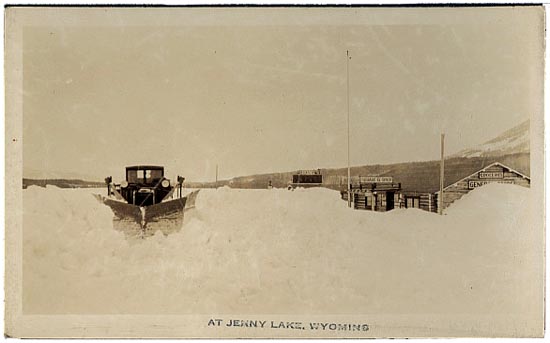
Jenny Lake in the winter, 1920s.
Among the first settlers in the Hole were Richard "Beaver Dick" Leigh who arrived in 1870 with his first
wife Jenny, after whom Jenny Lake is named.
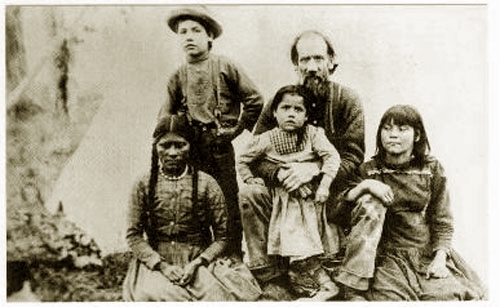
Dick Leigh with his second family, wife, Susan, and
children, William Bradhurst, Rose and Emma.
Dick Leigh was born in Manchester, England. At age 16 he ran away from home and joined the
Hudson's Bay Company. In 1872, he acted as guide for the Hayden Expedition into
Jackson Hole. Shortly before Christmas, 1876, the Leigh's gave shelter to a woman and her
child whose family had died of smallpox. As a result, the entire Leigh family,
Jenny and the five children died of the disease. Dick, himself, also contracted the
smallpox but survived. He later recalled that it was his tradition to hold a
candy pulling on Christmas Eve. In a candy pulling, molasses is boiled to a thick syrup. A fist full would
be taken and pulled, stretched, and twisted into a rope which could be cut into
pieces which as it cooled, typically in snow, would harden into a brittle candy. Leigh later wrote of his tending to
the children while they were ill:
"This was cristmos eve. Ann Jane died about 8 Oclock about the time every
year i used to given them a candy puling and they menchond about the candy
puling meny times wile sick espeshely my son John."
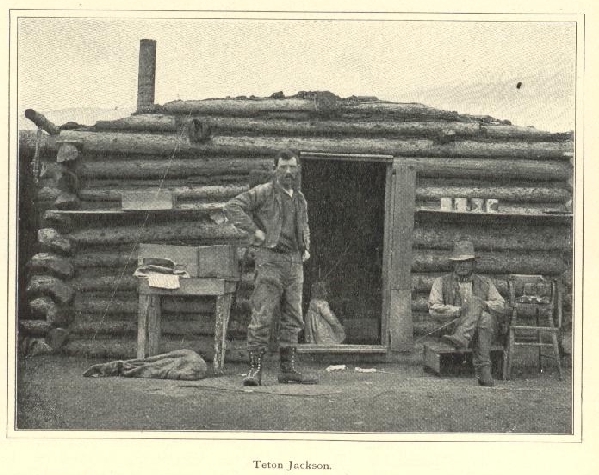
"Teton" Jackson, Scribner's Magazine, 1904
One of the very first settlers in Jackson Hole was "Teton" Jackson who frequented
the area between 1878 and 1885. He and several others engaged in the rustling
of horses and cattle and had cabins near the present day Elk Refuge. He was very adept at changing brands. In 1885 he was
caught and sentenced to the Idaho Prison in Boise. Suspected of being accomplices in his
"pre-owned" stock business, but not proven, were John Carnes and John Holland. Carnes and Holland
arrived in the valley in 1884 settling along Flat Creek. In 1886, Jackson escaped from the prison with
Scott Holbrook by tunneling out of their cell into the prison yard where they then climbed over the
wall. Although numerous inmates escaped from the prison, Jackson and Holbrook were the only ones to do
so by tunneling. Both were recaptured in 1888. Following the completion of his term, he
settled near Lander where he died as a pauper. Some question exists as to Jackson's real identity. One source refers to him as
"William Bradford" and another as "William C. Jackson."
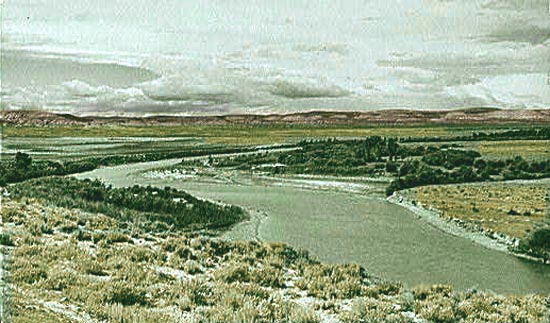
Snake River, 1941.
Next page, Grand Tetons continued.
|